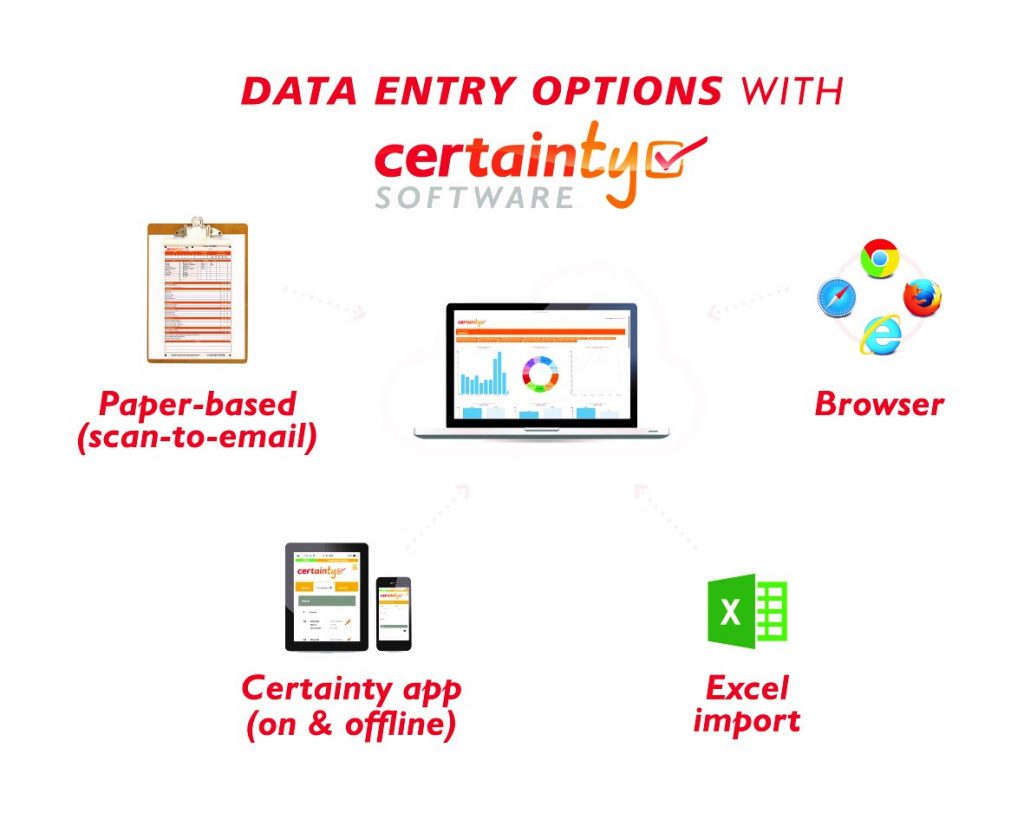Last week we looked at the importance of discovering whether the new enterprise software you’re considering meets your organization’s language requirements. Is the solution you’re evaluating a good fit? Let’s move on to the central, corporate-wide centralized software administration capabilities.
Having been in the enterprise-level software industry for decades, we have been involved in hundreds of projects in dozens of industry sectors with companies that are large and small, national and multinational, and leaders and laggards.
Over the years, experience has proven that time and again, when it comes to successful enterprise-level software projects, they all have one key factor in common: they have clear objectives and are well managed to ensure those objectives are met.
Data Consistency
Long-term project success will require that at least most of those involved contribute as they are required to but more importantly that the data you collect (for example to reduce risk, improve performance or ensure compliance) is consistent, comparable, and accurate both now and as your project develops.
So, when evaluating an enterprise-level solution you should ensure it has the administrative tools to define things like what data is collected and who has access to change data collection requirements and thus ensure you have a framework for data consistency, comparability, and accuracy.
Local Configuration
Furthermore, for larger multinational, multilingual, multifaceted companies, while there will always be a need for corporate-level ‘top down’ direction and dictation of the data that must be collected to ensure corporate-level data consistency and comparability, an enterprise-level centralized software administration solution should also provide for country, region, or location-specific additions and modifications to those ‘corporate’ data collection requirements to ensure both the needs of the corporate center and local operations can meet their reporting and management needs using the same solution.

Control Over Access and Privilege
Lastly, when it comes to the long-term success of larger enterprise-level software projects, an additional must is the ability for a central corporate-level project manager to define, administer and control the access and privileges that users (and teams of users have). There is nothing worse than the project lead in the US deleting the last 3 years of data entered by the team in Europe by mistake because you couldn’t specify – exactly – who has access to what.
From corporate-wide audit and inspection checklists and thus data collection to user access and privileges, without the tools to manage and administer at a corporate level, it is unlikely that a software solution will remain effective or provide for consistent, comparable, and actionable data and reporting.
- Are there features/tools that allow for corporate-wide data collection consistency and comparability?
- Can the solution be configured to allow for local, regional, and national variations without compromising corporate data reporting requirements?
- Can you administer user access privileges – exactly as needed?
- Can your own team restrict/configure user access sufficiently to protect data privacy and allow user access for people and teams across your business to do what they need in the solution?
Next week, we’ll continue our series on evaluating enterprise software by exploring the language requirements of your business.



